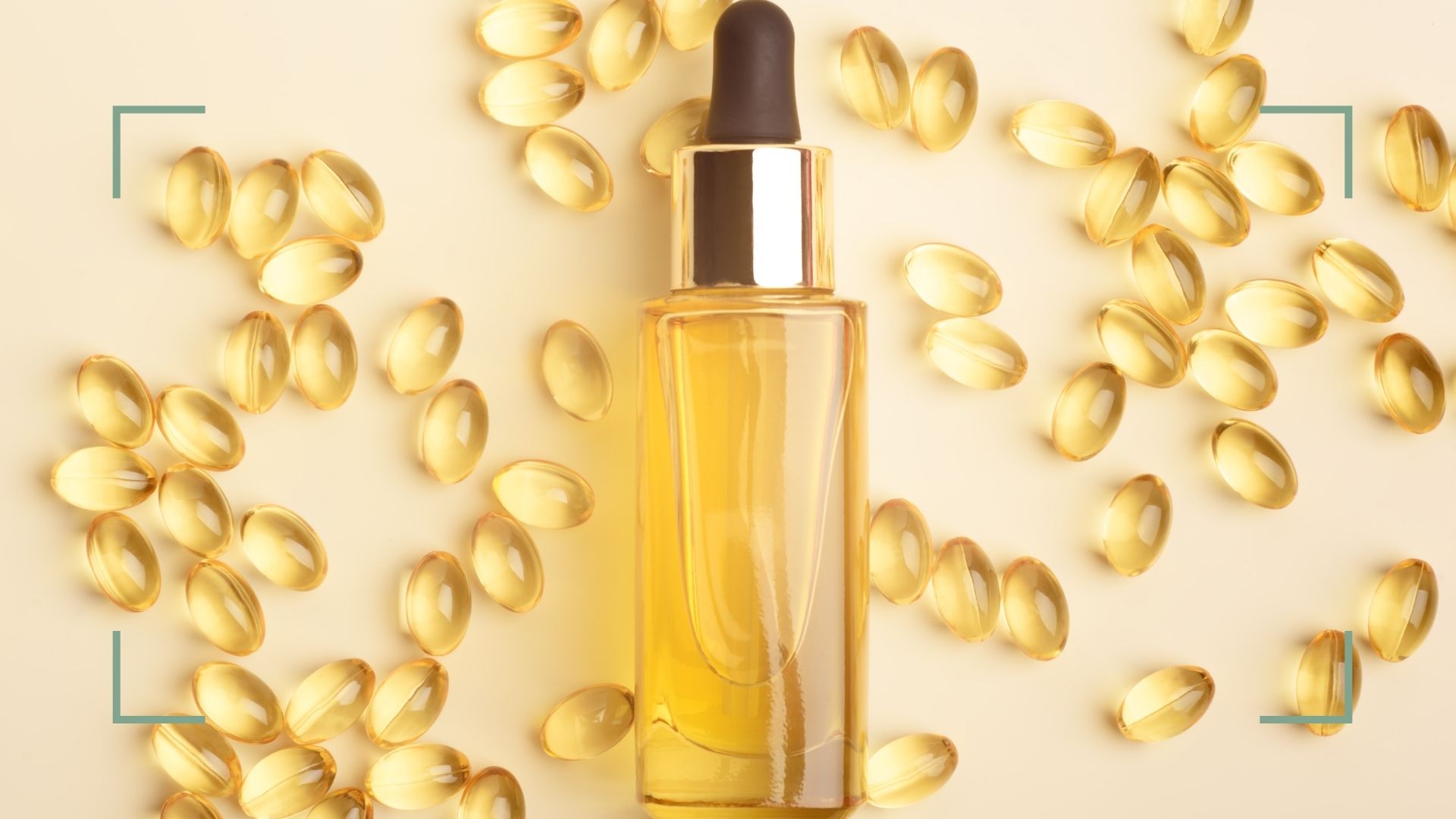What is Vitamin E and how does it work? We explain the versatile skin ingredient
Wondering why Vitamin E crops up in so many beauty products? We've got all the answers


Vitamin E is one of those ingredients that we all know we're supposed to be impressed by, or at least familiar with.
This nutrient is in everything from our body lotions and soaps to food and drinks, and it's probably all over your skincare routine. But have you ever wondered why Vitamin E is so omnipresent in our products? Or what exactly it can do for your skin, hair, and nails?
If so, wonder no more. This dermatologist-approved guide can explain everything you need to know about Vitamin E. So the next time you spot this skincare hero in one of your products, you'll understand all the great things it can do.
Vitamin E explained: everything you need to know
What is Vitamin E?
Vitamin E is, unsurprisingly, a vitamin that's found in various foods like soybeans, nuts, seeds, and green vegetables. In nature, it comes in a few forms, which broadly sit within two groups; tocopherols, and tocotrienols, each with four types called alpha, beta, gamma, and delta.
The type of Vit E you'll most likely find in beauty products is called alpha-tocopherol, and that's usually how you'll see it appear on ingredients lists. This form of Vitamin E is included in some of the best skincare products, as well as hair care, and even nail care, but is probably most common in face and body creams.
Vitamin E benefits
One of the reasons Vitamin E is so widespread in beauty products is that is combines multifaceted effects with a gentle nature. "Vitamin E is a fat-soluble vitamin that helps calm inflammation and reduce redness on the skin," explains consultant dermatologist Dr Ophelia Veraitch. "Vitamin E is also an antioxidant, helping to protect the skin from the harmful effects of UV damage."
As well as these calming and protective qualities, Vitamin E is an excellent moisturizing agent, that also helps boost the skin barrier to keep hydration within the skin and irritants out. What's more, Vit E can offer skin health benefits, including:
Sign up to our free daily email for the latest royal and entertainment news, interesting opinion, expert advice on styling and beauty trends, and no-nonsense guides to the health and wellness questions you want answered.
- Cell repair: Studies have linked Vitamin E to faster cell repair to help the skin recover itself from damage more quickly.
- Reduce eczema symptoms: Studies have shown that Vitamin E can help ease eczema symptoms due to its antioxidant effects.
- Enhanced healing: Vitamin E, especially in combination with other antioxidants like Vitamin C, can help the body heal faster.
How to use Vitamin E in your routine
There are Vitamin E products out there in every conceivable texture and form, from oils to serums light lotions, and rich creams, so you can truly take your pick depending on preference. In oil form, Vit E is fairly heavy, texture-wise, so is best used topically in small areas such as the cuticles, or on isolated areas of very dry or dehydrated skin.
This is an ingredient that plays nicely with other actives, so feel free to mix and match. The antioxidant benefits are more potent when combined with other antioxidants, within the best Vitamin C serums for example. Or you could apply one of the best face moisturizers containing Vit E as a soothing hydrator after using skincare acids such as glycolic acid, or retinoids. For scars or healing preparations, thicker, highly-concentrated creams can work very well.
The main thing to remember is, as with ascorbic acid (aka Vitamin C), UV-proof packaging is a must to ensure the product remains at its most potent. "Vitamin E is often not effective when in a topical preparation, as it is unstable when exposed to light," explains Dr Veraitch. For this reason, it's a good idea to use Vit E as part of your skincare night routine, as it'll work its magic while you snooze without any destabilization occurring.
Does Vitamin E have any side effects?
Vitamin E is usually safe for most people and has few side effects. However, rare reactions are still possible. A very small percentage of people (around 1%) may develop an allergic reaction to topical Vitamin E that can cause inflammation, redness, a rash, and itching. It can also clog the pores sometimes, so doesn't necessarily suit congested or acne-prone skin types.
To reduce the likelihood of any negative effects, it's best to test a small area of skin, away from the eyes. Serums tend to be more concentrated, so a cream might be a smarter place to start if you know you're very sensitive. If you do experience a reaction, stop using the product right away and give the area a good rinse.
woman&home thanks Dr Ophelia Veraitch for her time and expertise

As woman&home's Beauty Channel Editor, Fiona Mckim loves to share her 15+ years of industry intel on womanandhome.com and Instagram (@fionamckim if you like hair experiments and cute shih-tzus). After interning at ELLE, Fiona joined woman&home as Assistant Beauty Editor in 2013 under industry legend Jo GB, who taught her to understand ingredients and take a cynical approach to marketing claims. She has since covered every corner of the industry, interviewing dermatologists and celebrities from Davina McCall to Dame Joan Collins, reporting backstage at London Fashion Week and judging the w&h Beauty Awards.